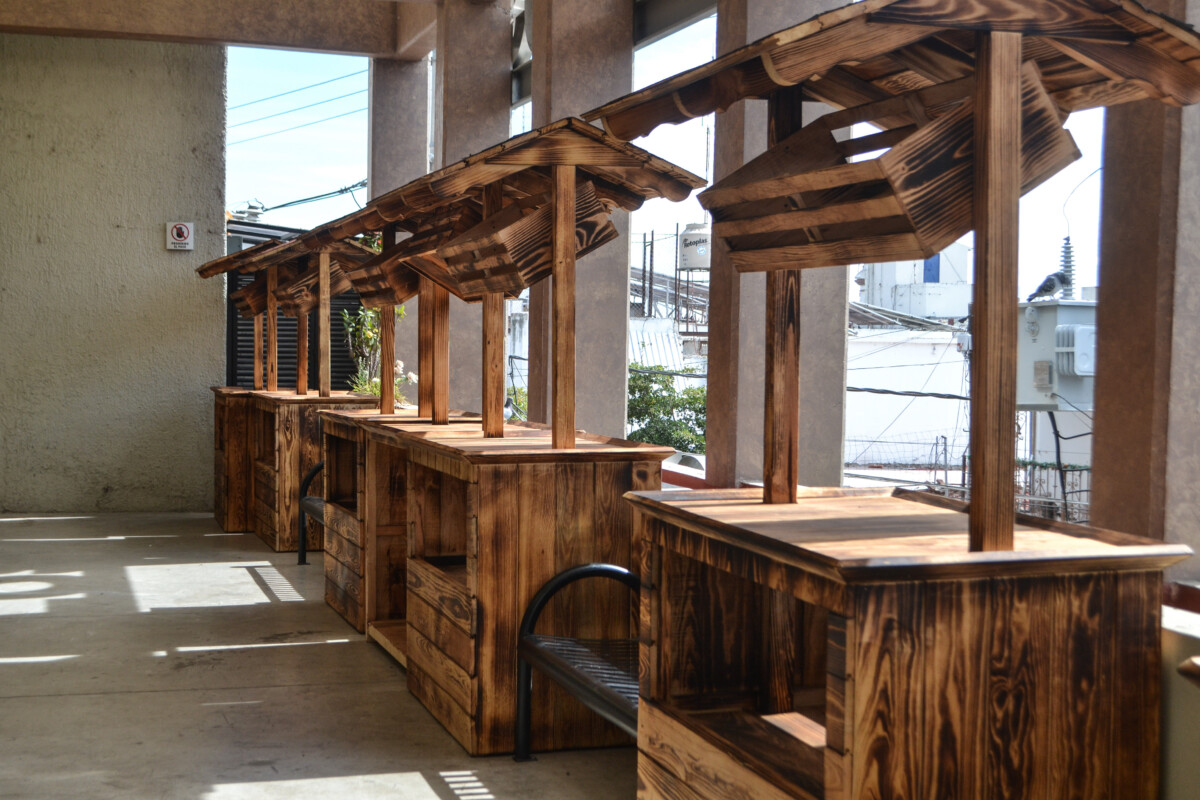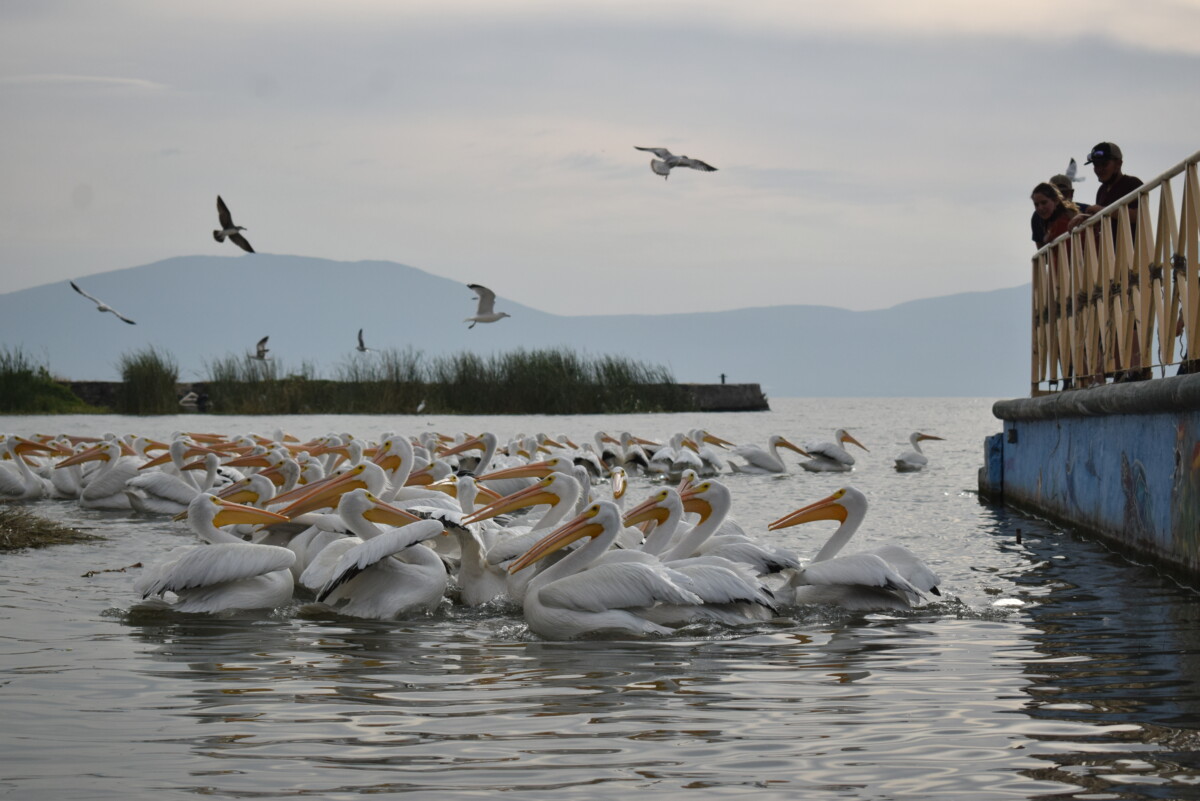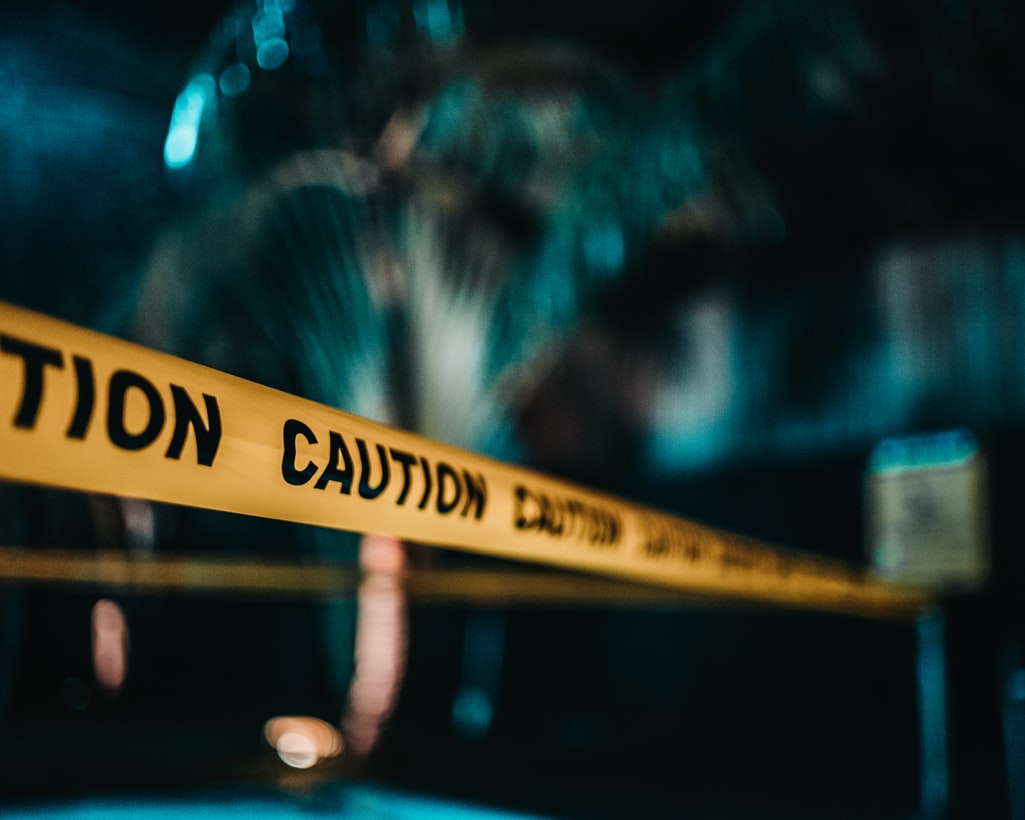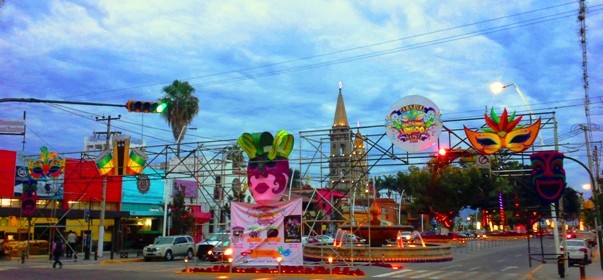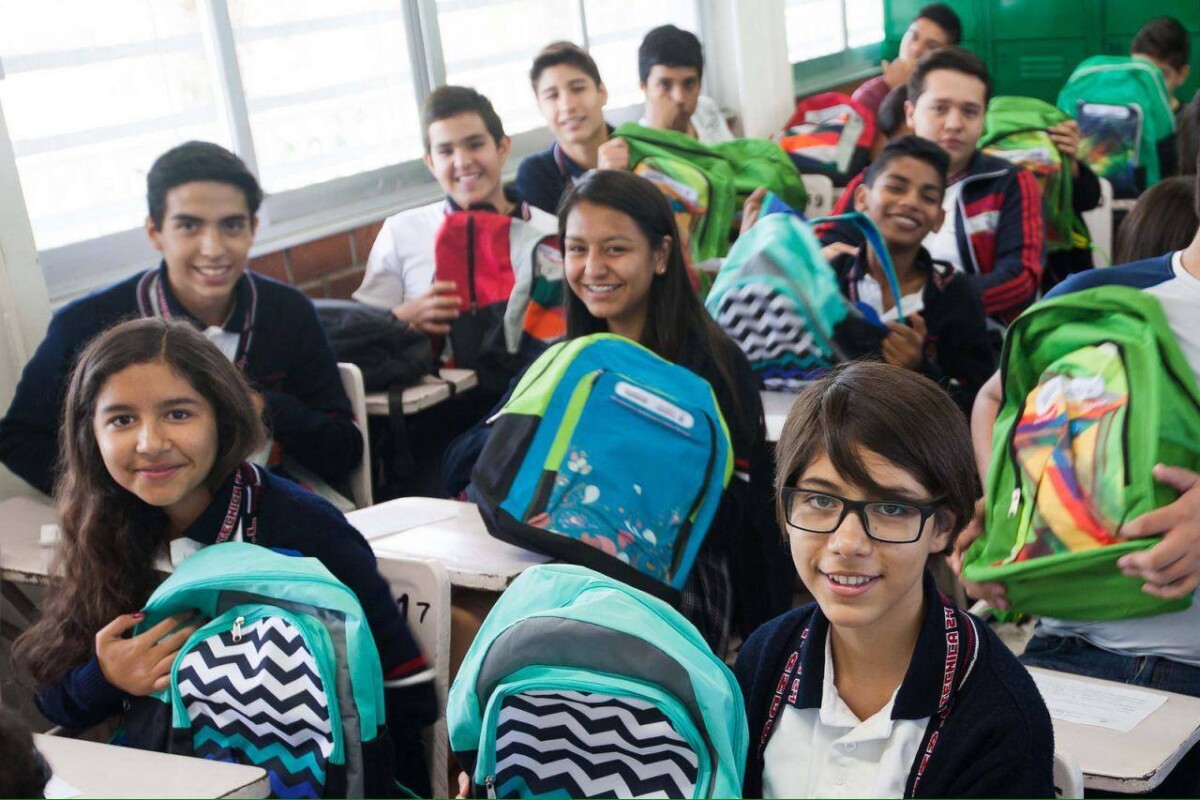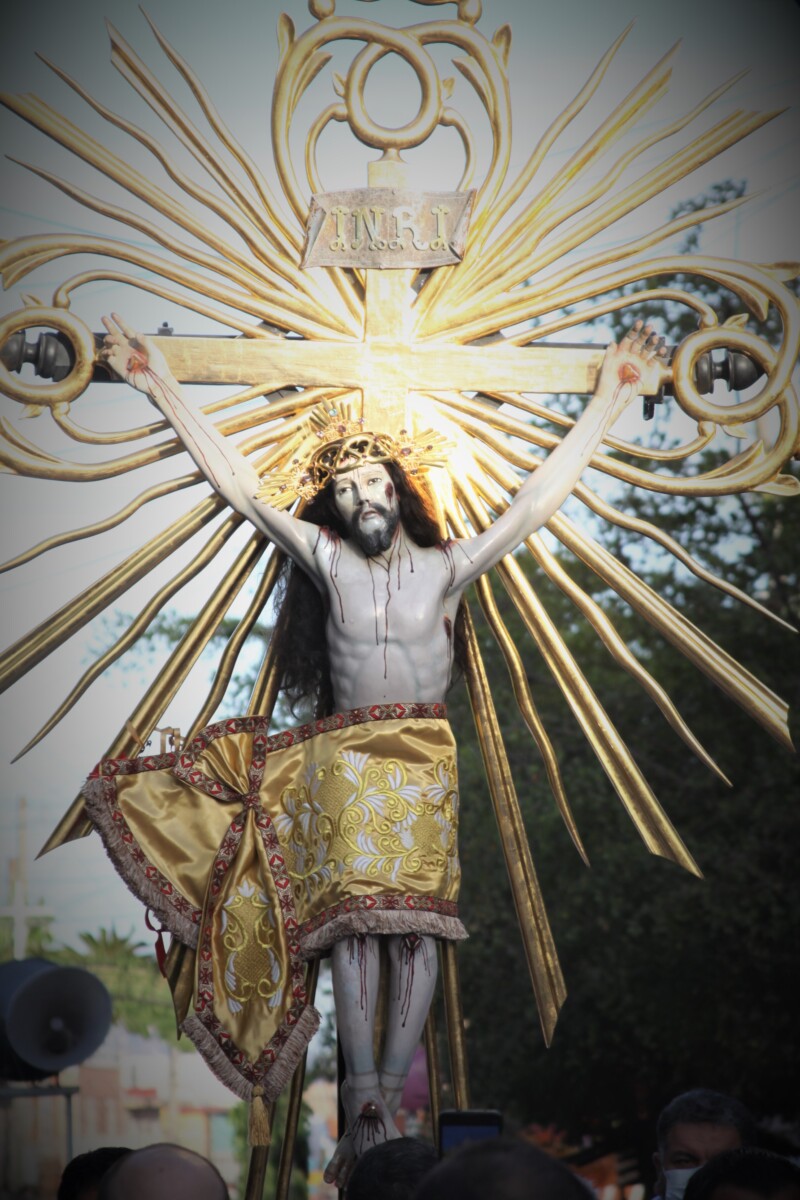en inglés
About 72 stores to be housed on Jocotepec market’s second floor
The new stalls made by City Hall for street vendors are already placed on what was to be the open balcony of the market. Photo: Héctor Ruiz.
Héctor Ruiz Mejía: There will be about 72 stores on the second floor of Jocotepec’s Mercado Morelos, according to the market’s tenants. Initially, 18 new spaces were designed to bring street vendors to the market from Morelos and Josefa Ortiz de Dominguez streets. That was not enough space, so 10 more new stalls were built. These wooden stalls have already been installed along what was intended to be the balcony of the second floor, so that “it would have an open space and a nice view,” said the vendors.
The current tenants say, “It was not as stipulated in the preliminary projects for the rehabilitation of the market.”
The new stalls, plus approximately 40 existing shops, will be on the second floor. But the street vendors have not yet been relocated and friction has already begun over space. Each store has an average of three merchants, so there will be approximately 216 people working in the area, not counting customers. Some vendors are concerned about the ability to maintain a healthy distance among all these people, and some say it is not possible.
“They are already trying to move my tables and no, I am not going to let them,” said one vendor who does not approve of the measure. “It is my space, and they have to respect it. I don’t know how we are all going to fit.”
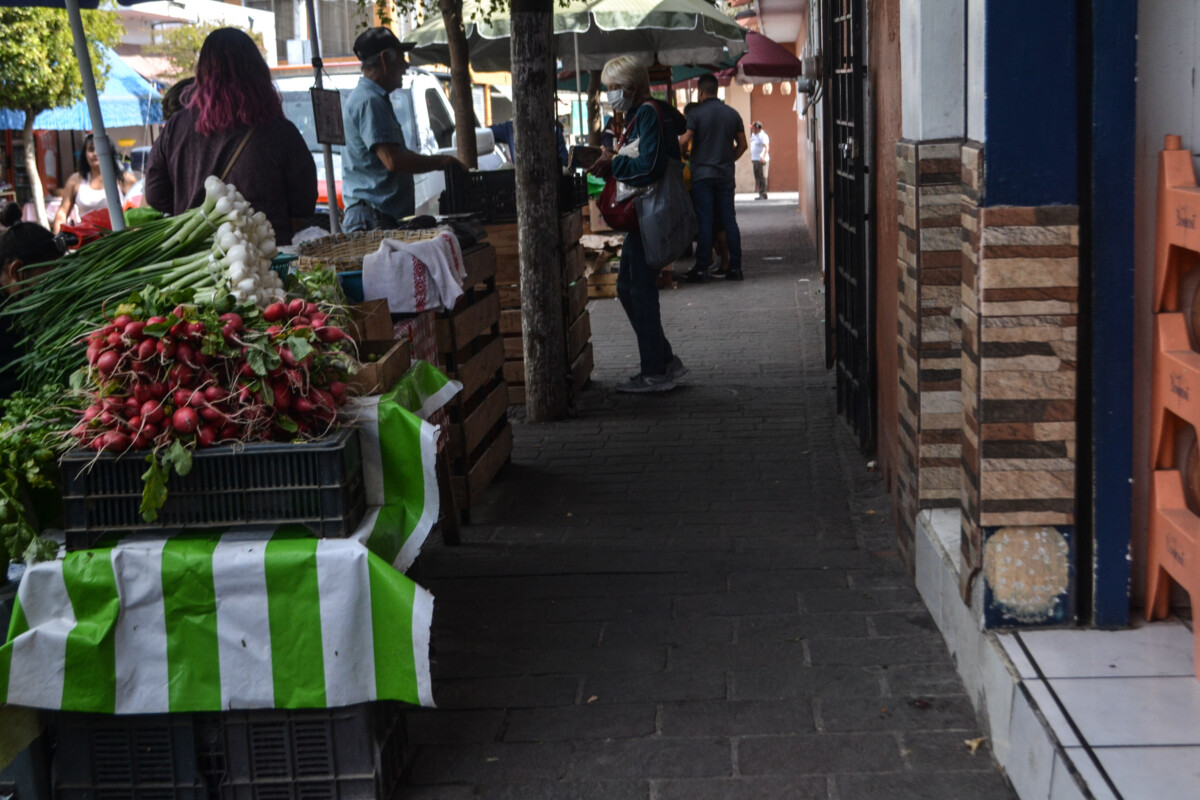
Vendors are worried about the reduced space available with the new stalls. Photo: Héctor Ruiz.
There is also uncertainty among the former street vendors because “although the stalls are well made,” they explained, they are very small in relation to the space needed for merchandise. Each module measures approximately one and one-half meters wide (about five feet).
In addition, the space between each stall is only about eight centimeters (just over three inches), which one person described as, “like sardines.” Both the current tenants and the street vendors who will be added try to visualize a positive scenario to coexist and “give life” to the mayor’s long-awaited project.
“We will see how it goes,” said one vendor. “The truth is that we are very worried about how we are going to make ends meet. We hope people will come.”
Translated by Mike Rogers
Postcard: Pelicans in Chapala
Jasmine Stengel. – American pelicans, or «borregones,» migrate every winter from southern Canada to the mild winter climates of the lakes of Jalisco and Michoacán. In Lake Chapala, up to 20,000 birds have been seen together.
The largest bird in North America, the pelican reaches 1.75 meters from beak to tail and three meters in wingspan. The largest specimens weigh up to seven kilograms.
Loudspeakers in Ajijic plaza repaired after several years of neglect
One of the loudspeakers located in the main square, in front of the kiosk.
Sofía Medeles (Ajijic, Jal.)- The speakers in the main square of Ajijic are singing again. This Monday, January 17, the two loudspeakers in front of the kiosk were repaired early in the morning, and by midday they were already playing melodies.
The Ajijic Delegado, Maximiliano Macías Arceo, said that the speakers had been in bad condition, with nests of insects inside. He is not sure how long they had been out of order. He said that they have been repaired and cleaned inside and out, which he believes was the first time in several years. «When we took them down, they were almost stuck together,” he said and then added that the Municipality of Chapala paid for the expense.
As for the programs broadcast, he said that they will mainly be radio stations like Fórmula Melódica, La Buena Onda, Radio Gallito, EXA FM, and others. «We may use them to broadcast announcements from the delegation or other presentations. We are waiting for instructions from the president on how to use them in the best way.”
The arrangements were well received by the residents who usually pass through or stay in the plaza. «It feels like before, it’s nice to listen to the radio, because sometimes in other locations you can’t get a good signal, here you can, and you can hear it very well. I came to eat my peanuts and sit down for a while to talk about the news,» said Don Nico, who usually goes to the plaza in the mornings.
The tentative schedule will be from 9:00 am to 4:00 pm. To date they have received positive comments from the villagers.
Translated by Nita Rudy
Motorcyclist runs over young man and flees the scene
Illustrative photo.
A motorcyclist was driving recklessly and at high speed at around 2 p.m. Jan. 18 in Chapala. The motorcyclist ran over a 26-year-old man and fled the scene.
The young man was left lying on the ground on Manzanillo Street at the intersection with Segunda del Cerrito in the San Miguel neighborhood. The injured man was examined at the scene and taken to the Chapala Cruz Roja facilities for medical evaluation.
Translated by Mike Rogers
Municipality of Chapala offers online payment for property tax, water payments
In-person property tax and water payments are no longer required
Jazmín Stengel.- In order to facilitate municipal payments of property tax and Municipal System of Potable Water and Sewerage (SIMAPA), to the residents of Chapala from any computer, the current administration renewed the agreement that allows it to keep the digital payment platform active.
The electronic payment service will be available this January 24 or 25. Due to new security configurations, it is currently in a testing and trial stage, said Elizabeth Oropeza, director of Social Communication of the City Hall.
At the end of 2020 there were 30,200 urban and 4,600 rural property tax accounts within the municipal limits of Chapala,
The agreement with BBVA bank was renewed during the course of last week, which now allows the City Hall staff to fine-tune the final details to reactivate the platform that can be found on the official web page www.chapala.gob.mx.
Discounts previously announced in the official government pages will be respected, including 15 percent during the months of January and February, 5 percent in March and April, as well as 50 percent for pensioners, retirees, widows and senior citizens.
The platform was implemented on December 14, 2020, and will be reactivated with the intention of avoiding crowds and facilitating municipal payments to people with coronavirus, disabled or senior citizens, who prefer the digital modality.
In addition to helping to prevent the possibility of Covid-19 infection, the modernization of this type of system helps to increase collections.
In 2022 the municipal administration expects to collect revenue of 373,799,144.80 pesos, including 57,258,757 pesos for SIMAPA, according to the Revenue Budget approved in the town council session of August 30, 2021. At that time, the municipal trustee, Isaac Alberto Trejo Gracián, announced the five percent increase, due to the inflation that year after year occurs in all types of products and services.
Translated by Kerry Watson
Opinion: Health and wellness at Lakeside
By Lety Trejo
Taking advantage of the month of January known for resolutions and intentions we wish to integrate into our lives, I am going to touch on the subject of Body Composition.
Modern digital scales not only tell us our weight and height, they also show us other important data. And why is this data important? Because it gives solidity to what we already know intuitively. It’s concrete because it’s in numbers, and in numbers there is no sentimentality. That is to say, it is not the same for your partner or someone in your family to tell you: «I think you have put on a little weight» or «Are you sure that this is the right size?” If a person tells us that we should lose weight it’s offensive and gives us the excuse to feel offended but do nothing about it. But we can’t get angry with a digital device, can we?
The most relevant data to know what kind of nutritional plan or what kind of training is going to get us to be healthier is the following:
Percentage of muscle mass (lean mass/protein).
Percentage of total water (cellular hydration)
Percentage of total bone (bone density/minerals)
Percentage of total fat
Percentage of visceral fat (surrounding organs)
These modern evaluations give the result as blood chemistry laboratories do, giving us a minimum and a maximum. That is, although we are not specialists, we know that below the minimum allowed there is a risk and above the maximum allowed there is also a risk. Modern gyms have this type of digital scales. Also, some nutritionists perform this evaluation so everyone can learn how urgent it is to commit to a healthy diet and proper training to be in shape.
RISKS. The risk of having low muscle mass is that you can easily acquire osteopenia or generate asymmetries in the skeleton. The risk of having a low percentage of water is cellular dehydration which makes you feel dizziness or headaches. A high rate of water represents fluid retention that generates general inflammation. One of the risks of having low bone density is having osteoporosis and being prone to fractures. The high total fat index represents overweight or obesity which is an invitation to diseases such as diabetes and hypertension. And finally, and most importantly, a high percentage of visceral fat indicates the risk of a heart attack or stroke.
With this text I do not intend to generate any alarm, only the awareness of having clear and precise data that will help us to take care of ourselves. After all, the body is the generator of pleasurable sensory experiences, freedom to move wherever our dreams take us, it is also our representative before others, remember that 75 percent of the communication between us and others is NOT verbal, but physical. If you want to be congruent with the greatness of your soul, take care of your body.
Translated by Sydney Metrick
Requested approval from the Jalisco Health Board to hold the Chapala Carnaval
The last Carnaval celebrated in Lake Chapala was in 2020. Photo: Archive.
Jazmín Stengel. Despite the pandemic, the Mayor of Chapala Alejandro Aguirre Curiel has requested approval from the Jalisco Health Board to hold the Chapala Carnaval, beginning at the end of February and running through early March.
After a two year absence, the City Council has decided to grant planning of the Chapala Carnaval to individuals to organize the festivities this year. «The idea is that it will be done externally with support from the municipality,» municipal president Alejandro Aguirre said. He added that a group of people has expressed interest in taking on the responsibility.
While public gathering restrictions issued by the Health Board of Jalisco will remain valid until February 12, the Municipality of Chapala has applied for and is awaiting the necessary permit to hold the festivities. In this respect, Aguirre reflected: «we have to learn to live with it (Coronavirus), since we are all exposed.»
Translated by MaryAnne Marble
San Sebastián ceremony returns with lively religious celebrations
Entrance of the procession to the parish of San Andrés Apóstol, where the image of the saint was finally left
Sofía Medeles (Ajijic, Jal.)- Although San Sebastián was celebrated with a very modest ceremony, the neighbors of the neighborhood did not miss the opportunity to celebrate the saint with a mass in the neighborhood located in the north of Ajijic, sharing hot chocolate and bread, and in the afternoon, with a small procession to return the religious figure, enlivened with a musical group and the traditional masked sayacas.
«The celebration was good. It was a little smaller than other years, but it felt just as nice,» said one of the participants.
The January 20 mass was celebrated in the neighborhood of San Sebastian, as it is the one day of his feast.
During the morning, the mass was attended by no more than 50 people and all of them respected at all times the health protocols in force. At the end, chocolate, cinnamon and tachihual bread were distributed to the participants of the Eucharistic ceremony. «It was good, it was small, unlike other years, but it felt just as nice,» said Don Antonio, a close neighbor of the neighborhood.

The neighbors of the neighborhood did not miss the opportunity to celebrate the saint with a mass in the neighborhood located in the north of Ajijic.
Later, during the procession, more people -approximately 70 people- could be seen. The procession began with the sayacas dancing, while behind them was a musical group, and at the end, San Sebastian, carried by four men.
Throughout the procession there was a group of children looking to be chased and floured by the sayacas. The sayacas danced, while all around them spectators enjoying the festivities and filming the scene.
«This is what one likes. There have already been so many big celebrations, like the one in Jocotepec. I don’t think there will be a fuss about this. There are only neighbors here and we are all wearing our masks. We had the pleasure of being together and also sharing a beer,» said Don Nico, minutes before the procession began.

During the celebration, a couple of tourists joined the dance of the sayacas that accompanied San Sebastian on his route through some of the streets of Ajijic
Although the route changed a bit –through Zapata, Javier Mina, Guadalupe Victoria, a lap around the plaza, and finally Parroquia street—San Sebastian was accompanied by spectators all the way. In the plaza, a couple of excited tourists joined the procession to dance to the music of the band.
«We didn’t imagine there was going to be a parade, we just came to walk around because there was an opportunity. We didn’t know San Sebastián, much less imagine that here in the Pueblito Mágico he is so beloved,» mentioned a man who was sitting in the plaza.
In the end, only those carrying the image entered the parish of San Andrés Apóstol where the saint was taken, as well as a few companions, while the sayacas remained at the entrance of the parish, and the band played the mañanitas outside the temple. After leaving him, the people returned to the neighborhood of San Sebastian, located to the north of Ajijic.
Translated by Sydney Metrick
Scholarship program benefits less than one percent of Jocotepec children
In Jocotepec alone, 9,100 children make up the basic education payroll. Photo: Courtesy.
Héctor Ruiz Mejía – Not even one percent of children in the municipality of Jocotepec benefited from the Jalisco Scholarship program, according to personnel from the Jalisco Ministry of Education (SEJ).
According to the SEJ, of the 12,106 scholarships awarded in 2021, only 106 went to children in the municipality of Jocotepec, representing just 0.84 percent of the total support granted to the state. In other words, of the approximately 9,100 children registered in the municipality’s basic education system, only 1.16 percent had access to the annual support.
The educational authorities of the lakeside municipality noted that this is a troubling situation, because although no precise data are available, they know from experience that there are many children who need support to continue or complete their studies.
Part of the problem, according to the municipality’s educational personnel, is that a considerable number of the applications do not meet the requirements and so do not qualify for the support. «We try to check that all the documentation is in order before passing it on to the person in charge, but in many cases the parents have failed to provide even proof of studies or proof of address,» said the representative, who preferred to remain anonymous.
Not meeting the requirements is one of the main reasons why the applications have been rejected. «We help with the processing of a thousand applications, however, for various reasons such as non-compliance with the paperwork, only 100 of these are approved» he explained.
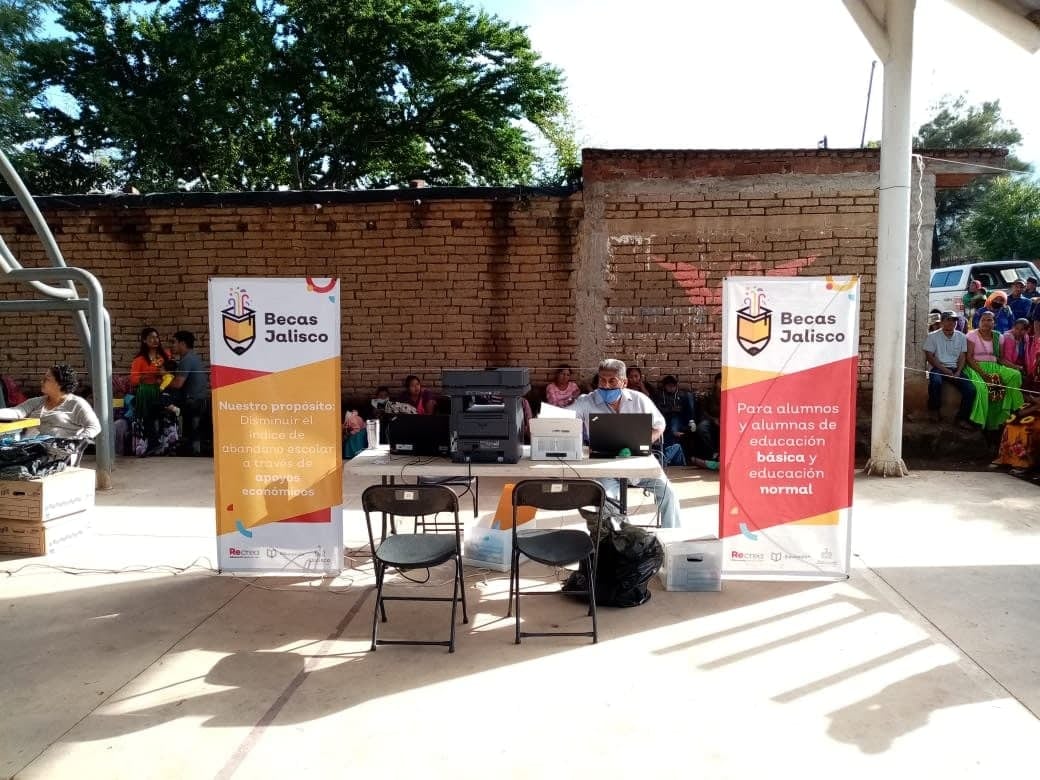
Education authorities regret the low percentage of children receiving economic support. Photo: Courtesy.
The representative also made it clear that the low budget allocated to education programs is an ongoing obstacle to providing adequate support to the children and young people who need it to complete their studies.
In his most recent visit to Jocotepec, Jalisco Director of Focus and Follow-up of the Ministry of Education (SEJ Fernando Lozano Morales met with municipal education authorities to speak about the situation. He acknowledged the precarious financial situation due to the federal budget cuts, but also reminded those present that Becas Jalisco (Scholarships Jalisco) is one of the few support programs to survive the cutbacks.
Furthermore, Fernando Lozano assured that despite current budgetary challenges, the amount allocated this year to the program will be triple the previous budget. This year’s goal is to provide access to funding for more families in a vulnerable economic situation in the lakeside municipality.
The Jalisco Scholarship Program was established as part of a strategy to prevent students from dropping out of school solely due to their families’ economic situation. The support consists of a one-time (annual) payment exclusively for children in basic education; funding is available for 1,800 students for the period January – June, and for 1,200 students for the period September – December.
Translated by Rebecca Zittle
Lakeside Chronicles
The Señor del Monte religious festival has filled the streets of Jocotepec for more than 180 years on the third Sunday of January.
By María del Refugio Reynozo Medina
That time long ago, we could not even reach the threshold of the parish; Juan Pablo and I got lost in the human tide that swirled around the statue of the Señor del Monte. We were going against the current; after the rubbing of sweaty bodies in which we could even feel each other’s ribs, we returned to the little truck that had taken us there and was about to leave us. We could not see the Señor del Monte.
More than 20 years have passed since that day. Today, half an hour before the start of the procession, the atrium begins to receive the pilgrims who continue to arrive, but do not flood the enclosure. According to some parishioners, this year there was half the attendance compared to the years without the Covid-19 pandemic. Some five thousand people this year, according to data from the Civil Protection Office of the municipality of Jocotepec.
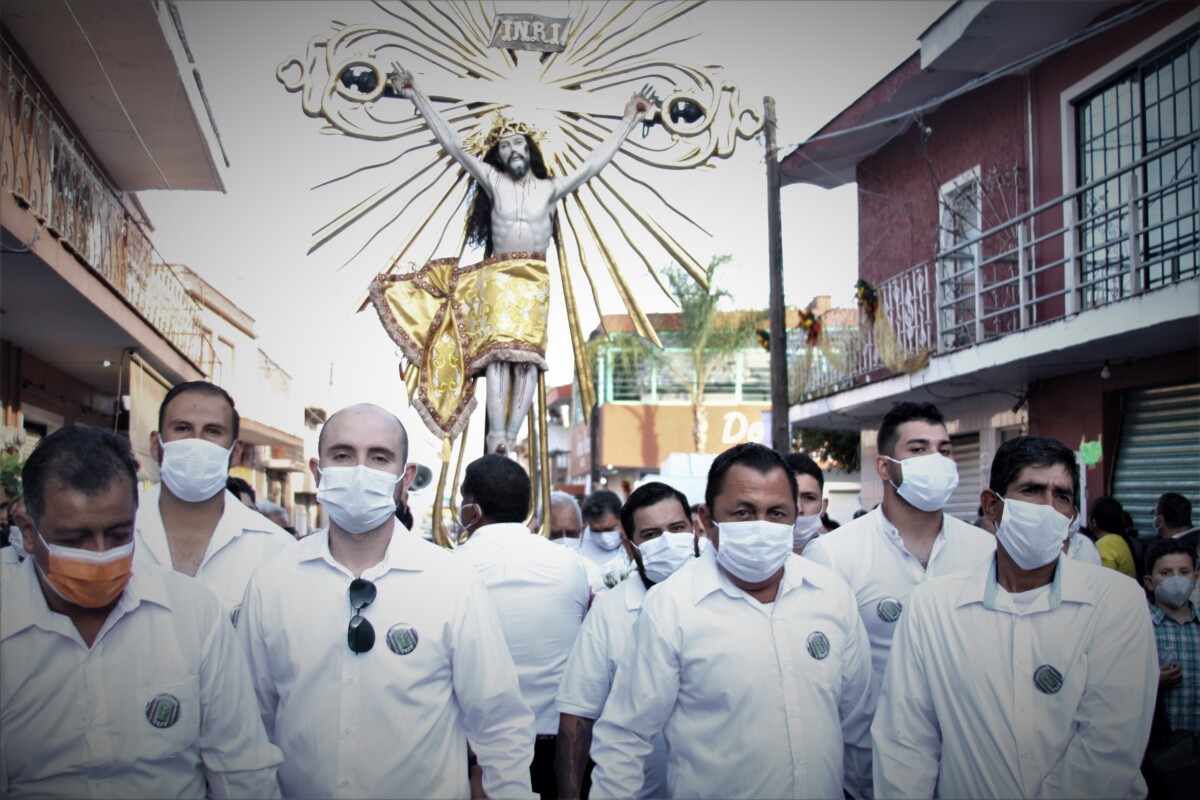
The positions of the honor guard are inherited from generation to generation to the firstborn.
In the temple, the members of the honor guard are already behind closed doors preparing the Señor del Monte for his journey, as has happened every third Sunday of January for more than 180 years.
The Jocotepec chronicler Manuel Flores Jiménez, marks the year 1834 as the first occasion that the ancestors celebrated his «miracle,» then November 8, 1833, as the date in which they also congregated, to swear in writing to take him as the patron saint of their lives. In 1918 the oath was renewed.
The honor guard is composed only of men, all direct descendants of those who took the original oath. There are about 150; most are adults, the youngest is 11 years old. They are grouped by families, each one with a specific task such as organization, preparation of the image for its journey and care and custody of the patron during the procession.
Belonging to the honor guard is a privilege that is inherited from generation to generation and becomes a gift that arrives by destiny.
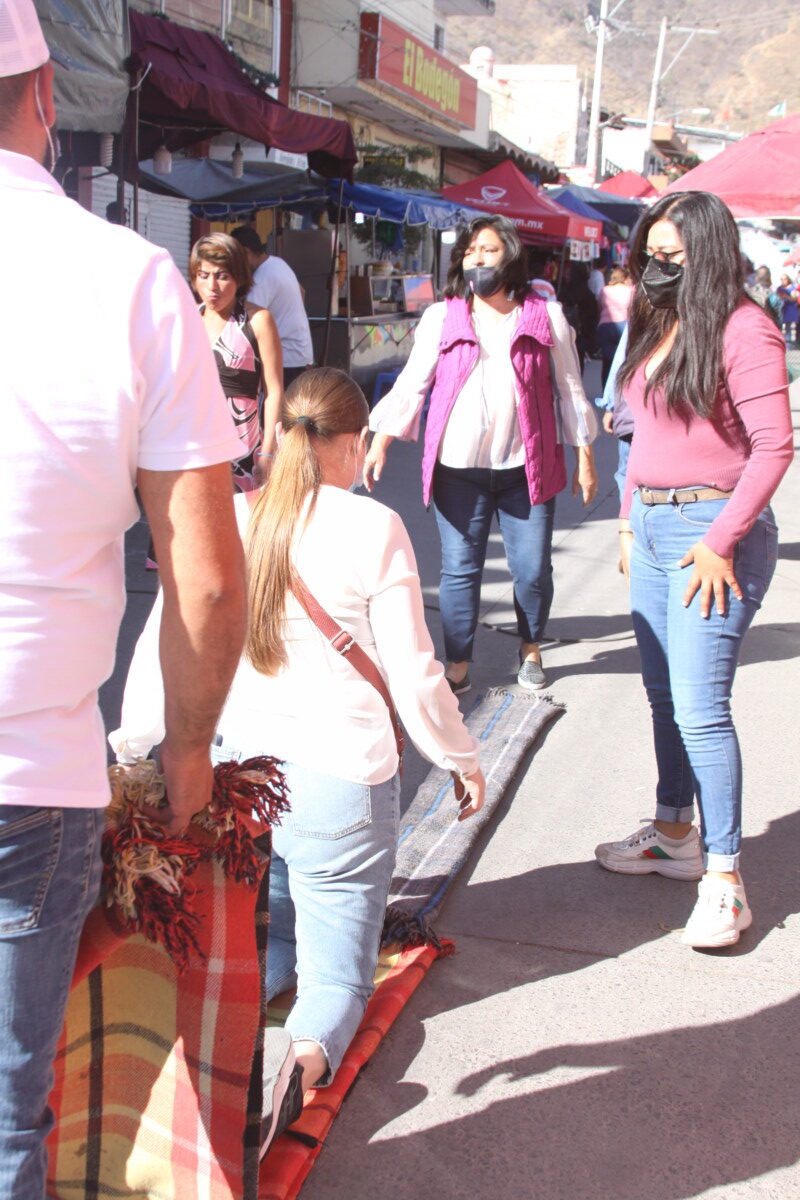
Some people advance to meet the procession kneeling to give thanks for favors received or to ask for help from the Señor del Monte.
The men of the honor guard are dressed in white shirts, surrounding the image that has already been taken down from the altar, and finish preparing it for its procession. There are few women in the place; not even ten, they are direct relatives of the members of the honor guard. It was not until about ten years ago that women were allowed to enter.
The Lord of the baptistery is already downstairs, as his ancestors called him before he became their official patron saint, according to the records of the chronicler Flores Jiménez.
The Christ directs his gaze to the sky with half-open lips, has a sharp nose, beard and black hair. He has his arms extended on the wooden cross that appears to shine; that cross «morena de sol» as father Benjamín Sánchez calls it in the Romancero de la vía dolorosa, is bordered with golden rays.
The Señor del Monte wears a coppery cloth with rich embroidery, and on his head, a splendorous crown made of prayers always heard, because «this Lord is very prodigious.»
“I am one of his miracles,» says Manuel Ibarra, who emerged victorious from a cancer diagnosis. Before going to the hospital, he prayed to the Señor del Monte for his health and touched the body of the Christ figure with a piece of absorbent cotton, to carry it with him in the battle against the disease. That was 12 years ago.
Jésus Pérez is the grandson of Cándido Pérez, the latter was present at that historic oath and appears in a painting, «The Oath» which is in the sacristy of the parish. Now Mr. Jésus participates with his son Óscar Pérez and his grandson Alejandro Pérez.
Minutes away from the beginning, the bells toll with a festive flavor, a human fence begins to form and dozens of eyes look anxiously at the huge wooden door.
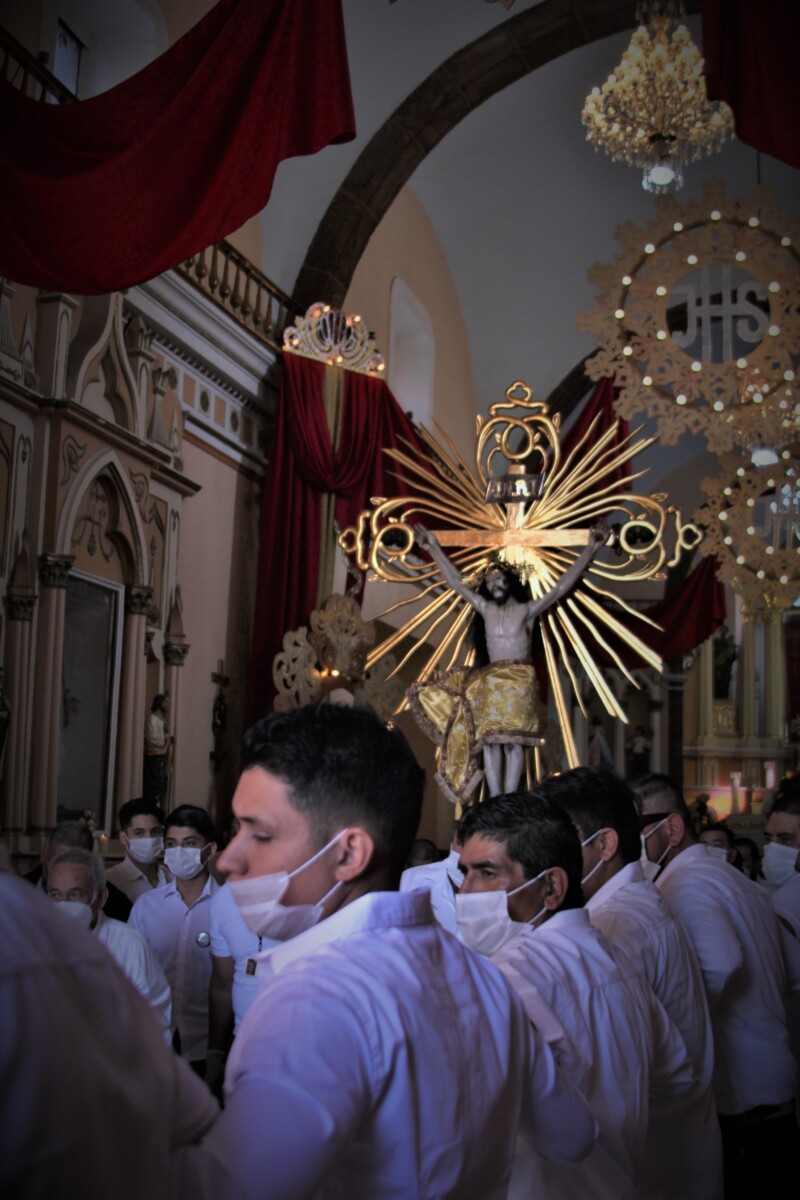
The men of the honor guard intertwine hands to leave the temple with the image at the beginning of the procession.
-Long live the Señor del Monte!» shouts a man’s voice, seconded by another female voice.
-Long live! ¡Viva!
The fervent voices respond and the door opens.
The faithful crowd moves to meet the crucified Christ. The drums of the dancers sound and the pilgrimage begins.
Leading the procession is a girl of about five years old dressed as a dancer, she emulates the steps of her elders and glides safely across the width of the street.
A man and a woman wear white t-shirts with «Danza por manda» written in black letters. With them are more people who dance throughout the procession in orderly rows. There is also the marching band, a young man on stilts who helps with the order of the walkers, and a mariachi band.
A female voice prays the rosary and sings over a loudspeaker from a cart.
Some streets are adorned with bows of red and yellow satin ribbon, also with arches of fresh flowers.
The Señor del Monte is carried by a guard of 20 men, one of them walks backwards, every so often along the way they are exchanged for another group of 20. Five guard changes are made along the pilgrimage, in total there are one hundred men who help carry the patron saint.
«Vivas!» to the Señor del Monte are heard along the route, tearful eyes seek the face of the crucified, there are many tears shed, many prayers in silence, which are announced by the tearful look of those who come out in their path.
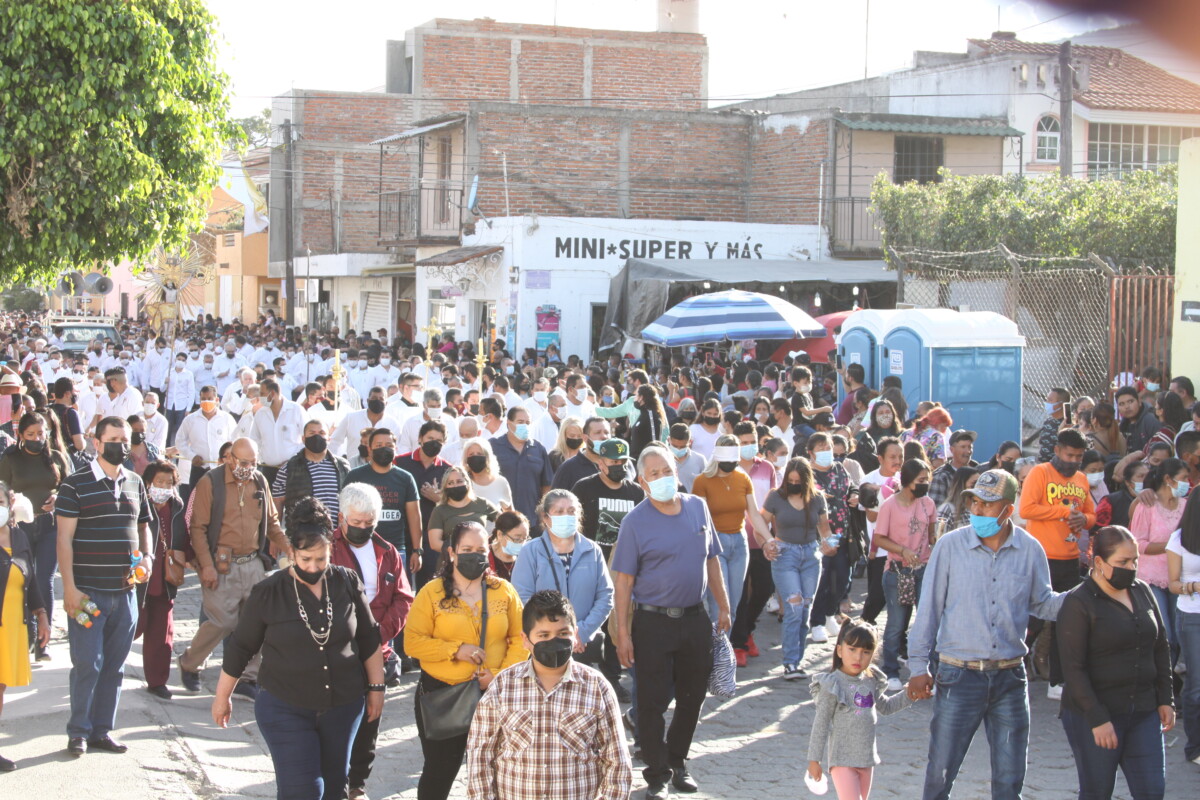
With the attendance of about five thousand people, according to data from the Civil Protection Department of Jocotepec, the procession in honor of the Señor del Monte took place.
Some people go barefoot and blindfolded; a line of men and women who advance kneeling in the opposite direction to the procession, go to meet the image, supported by folded blankets thrown on the floor.
Civil Protection officers watch over those who are kneeling and help them to get back up.
The khaki uniforms of the officers and their yellow helmets contrast with the brightly buttoned suits of the mariachis and the white shirts of the guardians of the faith.
The officers, the faithful, musicians, and priests all converge in an ancestral procession, dedicated to that ancient Lord of the baptistery who summons thousands because his presence radiates something indescribable.
Translated by Kerry Watson
© 2016. Todos los derechos reservados. Semanario de la Ribera de Chapala
